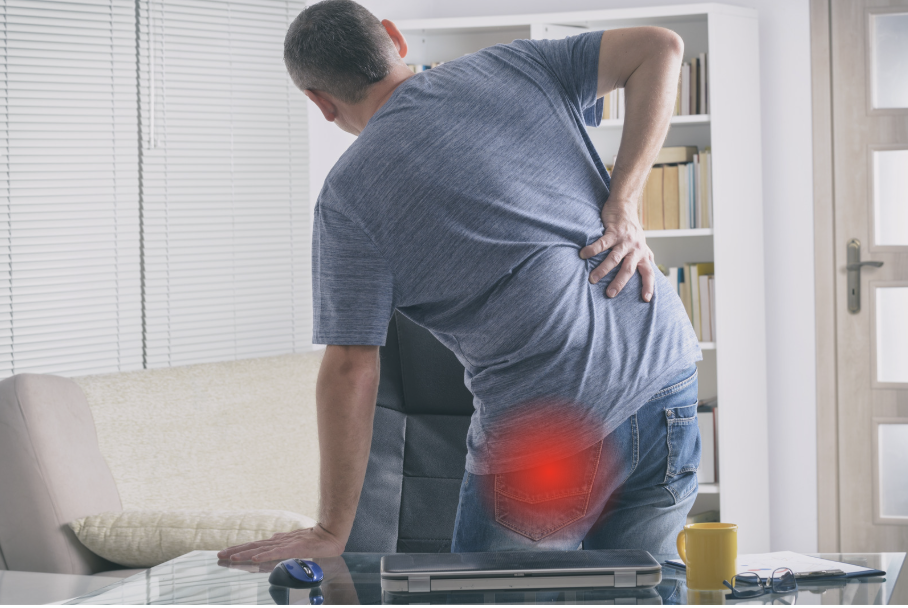Piriformis Syndrome
Patient experiencing piriformis pain.
What is Piriformis Syndrome?
This is a condition where the piriformis muscle, located in the buttocks, compresses the sciatic
nerve, leading to pain, tingling, or numbness along the path of the sciatic nerve. This pain typically
starts in the lower back or buttocks and can radiate down the leg, sometimes resembling sciatica.
Common symptoms include:
• Pain: In the buttocks, lower back, or down the leg.
• Tingling/Numbness: Feels like pins and needles in the affected leg.
• Muscle Tightness: A sensation of tightness or spasm in the buttocks.
Easy Home Treatments:
Here are some easy-to-follow at-home treatments based on the provided image for managing Piriformis
Syndrome:
Self-Stretching Exercises
One of the best ways to relieve muscle tension is through self-stretching exercises. Try the
piriformis stretch: cross one leg over the other and gently pull your knee towards your chest. You
can do this stretch while seated, lying down, or standing. This exercise helps reduce compression
on the sciatic nerve and eases discomfort.
Avoid Prolonged Sitting
Sitting for too long can make your symptoms worse. To keep your piriformis muscle from getting
aggravated, take regular breaks to stand up and stretch throughout the day. This will help keep your
muscles loose and relaxed.
Gentle Warm-Up Exercises
Before getting out of bed in the morning, try doing some gentle warm-up stretches. This helps relax
your muscles and reduce stiffness.
Heat Therapy
Applying heat to your lower back or gluteal area can work wonders. Use a heating pad or warm
towel to reduce muscle spasms and improve circulation. Heat helps relax tight muscles and provides
relief, especially before or after your stretching exercises.
What We Offer to Relieve Your Pain
Dr. Sekhon providing treatment to patient for piriformis syndrome.
Chiropractic
In our sessions, we may use chiropractic manipulation to gently adjust your pelvis and other joints.
This helps correct any misalignments in your sacral - iliac joints, improving your mobility
and reducing the strain on your piriformis muscle. The goal is to get your body moving more
freely and comfortably.
Massage Therapy
Our deep tissue massage and myofascial release techniques are designed to target muscle
spasms and enhance blood circulation. This not only helps relieve tension in the piriformis
muscle but also eases discomfort in nearby muscles, including those in your hips and lower back.
Electrotherapy
We may recommend TENS (Transcutaneous Electrical Nerve Stimulation) or IFC
(Interferential Current) therapy. These treatments use gentle electrical impulses to relax your
muscles and reduce pain, helping your body heal more effectively.

